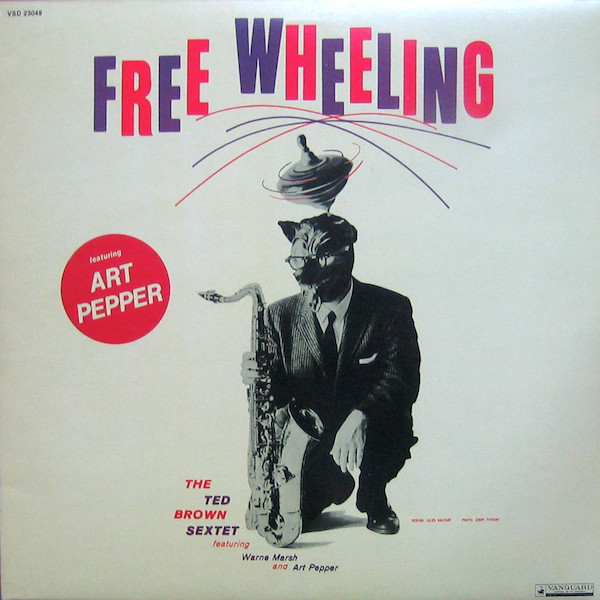Aretha – Ronnie Ball
An inventive line on the changes of Tangerine, named for Ronnie's first wife. Lead sheets and a condensed score and parts are available for the three-horn arrangement.
- Recording: Ted Brown - Free Wheeling
- Recorded on: December 21, 1956
- Label: Vanguard (VRS 8515)
- Concert Key: F
- Vocal Range: , to
- Style: Swing (medium up)
- Alto Sax - Art Pepper
- Tenor Sax - Warne Marsh, Ted Brown
- Piano - Ronnie Ball
- Bass - Ben Tucker
- Drums - Jeff Morton
Purchase Aretha - Ronnie Ball
Purchasing this song through our affiliate links with certain retailers provides jazzleadsheets.com with additional support to help keep us bringing you the best lead sheets available. Thank you!
Video
- Description
- Historical Notes
- Solos
- Piano Corner
- Bass Corner
- Drum Corner
- Guitar Corner
- Inside & Beyond
- Minus You
A playful, inventive song based on the standard Tangerine. The melody combines winding stepwise motion with more arpeggiated figures. Though Tangerine is an ABAC form, the melody of Aretha repeats its opening theme only in the last eight measures, though starting on beat 2 instead of beat 1 as at the beginning. The changes are stretched and transformed in a few places, most notably the C section which starts with a series of diminished chords leading to an unexpected Amaj7, six beats of D7, and then A♭m7 on the fifth measure leading back into Gm7. The regular Tangerine changes are used on the solos; these changes are shown below the staff on our lead sheets where they differ from the head changes.
About the arrangement: The three saxes begin in unison, and go into harmony for much of the B and C sections as well as the last melodic phrase. They are voiced mostly in triads, with the two tenors on top and bottom and alto in the middle. At the end of the B section the top and bottom lines are in contrary motion.
The range of the melody goes above the standard range of the tenor sax in two places. Warne Marsh handles the altissimo notes perfectly on the recording; they are included in our tenor sax lead sheet. Tenor saxophonists playing the melody without the three-horn arrangement can take the altissimo passages down an octave.
playing the sextet arrangement:
Don Sickler: I brought this sextet arrangement and Arrival, the other Ronnie Ball sextet arrangement from the same album, to my top sextet combo at Columbia University. I wanted to see how they enjoyed them, plus I wanted to check for any mistakes in our parts. The ensemble loved both charts. Although I have a very good tenor saxophonist in the group, to start out, he preferred playing the other tenor part (3rd part) from the original recording. Our alto saxophonist played the E-flat lead sheet (which is the first part). The 3rd front line instrument in this group is guitar, so he played the Guitar (2nd part).

"It's always fun to get to see an original recording part. For more about this session, see the historical notes for Arrival."
Related Songs
Email Send Aretha to a friend

Ronnie Ball
December 22, 1927 – October 3, 1984
Ronnie Ball was born in Birmingham, United Kingdom, where he played local gigs from the age of fifteen before moving to London in 1948. There he worked with Tony Kinsey and Reggie Goff's Sextet as well as leading his own trio. He worked on the Queen Mary on the transatlantic cruise run to New York from 1949 to 1951, studying with Lennie Tristano on New York stopovers. Read more...

